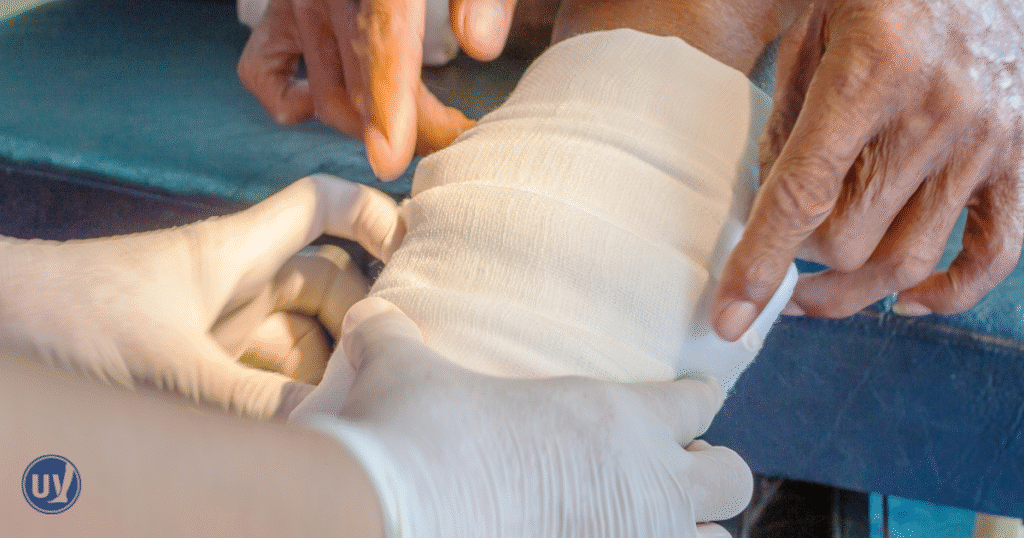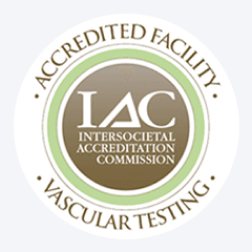Managing a venous ulcer can feel overwhelming, but taking control starts with understanding your condition. These chronic wounds often develop on the lower legs when veins struggle to move blood efficiently, leading to swelling, discomfort, and skin changes that can affect daily life.
The good news is that proper care and preventive strategies can make a real difference. Simple daily routines—like gentle cleansing, dressing changes, and using compression therapy—can promote healing and reduce the risk of infection. Small lifestyle changes, such as staying active, maintaining a balanced diet, and elevating your legs, support circulation and long-term vein health.
Living with a chronic condition also takes an emotional toll. Connecting with healthcare providers and support resources can help you stay resilient and empowered. By learning practical strategies and embracing proactive care, you can improve healing, prevent complications, and maintain a better quality of life.
Understanding Venous Ulcers: Causes, Symptoms, and Risk Factors
Venous ulcers develop when the veins in the legs do not return blood back to the heart efficiently. This inefficiency leads to increased pressure in the veins, resulting in skin damage over time. Chronic venous insufficiency is the main cause of these ulcers.
Common symptoms include swelling, aching, and skin discoloration around the ankles. You might also notice itching or hardening of the skin. These signs indicate a need for proper medical attention.
Several factors can increase the risk of developing venous ulcers. These include a history of deep vein thrombosis, obesity, and extended periods of standing or sitting. Age, gender, and genetic predispositions can also play a role.
Key risk factors to be aware of include:
- Family history of vein disorders
- Previous leg injuries
- Obesity or high body mass index
Understanding these causes and risk factors empowers you to take steps toward prevention. By managing underlying conditions and maintaining an active lifestyle, you can reduce your chances of developing venous ulcers. Recognizing early symptoms and risk factors can lead to timely intervention and better outcomes.
The Importance of Daily Wound Care for Venous Ulcers
Effective daily wound care is crucial for venous ulcers to promote healing and prevent complications. Consistent care helps maintain a clean environment around the wound, reducing the risk of infection.
Caring for venous ulcers involves a few essential steps to support healing. Wound care management is vital in maintaining the skin’s integrity and facilitating recovery. Regular cleaning and appropriate dressing play significant roles.
Timely and proper wound care management can greatly enhance the healing process. By carefully following these steps each day, you contribute significantly to your own recovery.
Persistent ulcers require careful monitoring, and healthcare professionals can offer guidance tailored to your needs. This partnership ensures that any changes in the wound’s condition are addressed promptly, preventing further complications. Prioritizing daily wound care sets the foundation for long-term healing and overall wellness.
Step-by-Step Guide to Wound Care Management
Managing venous ulcers involves a systematic approach to ensure proper healing and prevent infections. Each step plays a crucial role in wound care management, aiding recovery and enhancing comfort.
The wound should be cleaned daily with care. Using saline or a solution recommended by your healthcare provider will remove debris and bacteria. This gentle cleaning prepares the wound for dressings.
Dressing the wound correctly is vital. Choose dressings that maintain a moist environment, as this promotes faster healing. Change them regularly to keep the area clean and fresh.
Essential Wound Care Supplies
- Saline or prescribed cleansing solution
- Appropriate wound dressings
- Sterile gauze and adhesive tape
Compression therapy supports the healing process by improving blood flow and reducing swelling. Compression bandages or stockings should be applied as directed to boost circulation and facilitate recovery.
Elevating the legs when resting decreases venous pressure and promotes better blood flow to the ulcer. This simple practice is beneficial, especially during sleep or relaxation periods.
Daily Wound Care Routine
- Gather all necessary supplies.
- Clean the wound with the solution.
- Apply fresh dressings.
- Put on compression stockings or bandages.
- Elevate legs during rest.
Every step in this routine contributes to successful wound care management. It is important to remain consistent in your approach and communicate with your healthcare provider for any adjustments needed. Following this guide diligently helps foster healing and improve your quality of life.
Preventing Infection and Recognizing Warning Signs
Preventing infection in venous ulcers is crucial for healing. Proper wound care practices are essential in reducing infection risks. Keeping the wound clean and covered plays a significant role.
Patients should monitor their wounds for signs of infection. Early detection allows for prompt treatment, minimizing complications. Awareness of symptoms can make all the difference.
Look out for the following warning signs of infection:
- Increased redness around the wound
- Pus or unusual discharge
- Fever or increased warmth in the area
If any of these signs appear, contact a healthcare provider immediately. Swift action can prevent the infection from worsening. Educating yourself and staying vigilant helps ensure effective venous ulcer care. Working closely with healthcare providers enhances your ability to manage your condition.

Lifestyle Changes to Support Healing and Prevention
Adopting healthy lifestyle habits is vital in managing venous ulcers. Small, consistent changes can greatly impact healing and prevention. Prioritizing these adjustments fosters better outcomes.
Physical Activity
Engage in regular exercise to promote circulation. Activities like walking help improve blood flow and reduce swelling. Consistent movement encourages healing.
Healthful Living
Consider incorporating the following habits:
- Quit smoking to enhance circulation
- Manage weight to alleviate pressure on legs
- Control conditions like diabetes or hypertension
These steps contribute significantly to the healing process. Each modification supports better overall health and wound recovery.
Daily Practices
Implement these daily routines:
- Elevate legs to decrease venous pressure
- Wear compression stockings as advised
- Practice good skin hygiene to prevent complications
Being proactive in your care is essential for success. By integrating these lifestyle changes, you create a healthier environment for your body to heal. Remember, support from healthcare providers and loved ones further amplifies positive outcomes.
When to Seek Advanced Venous Ulcer Treatment
Sometimes, wounds don’t heal as expected. If your venous ulcer shows no improvement after weeks, consider seeking advanced treatment. Persistent pain or increased wound size can signal the need for additional care.
Advanced treatments are available for stubborn ulcers. These include skin grafts, bioengineered tissue, or specialized wound therapies. Early intervention is key to preventing further complications and improving outcomes.
Indicators for Advanced Treatment
Watch for these signs:
- Worsening appearance
- Persistent swelling
- Signs of infection
Consult your healthcare provider if you notice any of these indicators. Prompt action can enhance healing and prevent further issues.
Taking Charge of Your Venous Ulcers Care Journey
Living with venous ulcers can be challenging, but proactive care plays a crucial role. By following daily wound care strategies, you can improve healing and reduce complications.
Remember, consistent collaboration with your healthcare team is essential. With the right care plan and support, you can enhance your quality of life and manage your venous ulcers effectively. Empower yourself with knowledge and take confident steps toward better health. If you’re looking for expert guidance and personalized venous ulcer care, schedule a consultation with United Vein & Vascular Centers today.
Frequently Asked Questions
Regular wound cleaning, proper dressing changes, compression therapy, and elevating the legs are key steps to support healing and reduce swelling.
Staying active, maintaining a balanced diet, and avoiding prolonged sitting or standing improve circulation, which can support recovery and prevent complications.
Persistent wounds, increasing discomfort, or signs of infection are indicators to consult a vascular specialist for a tailored treatment plan and advanced care options.


